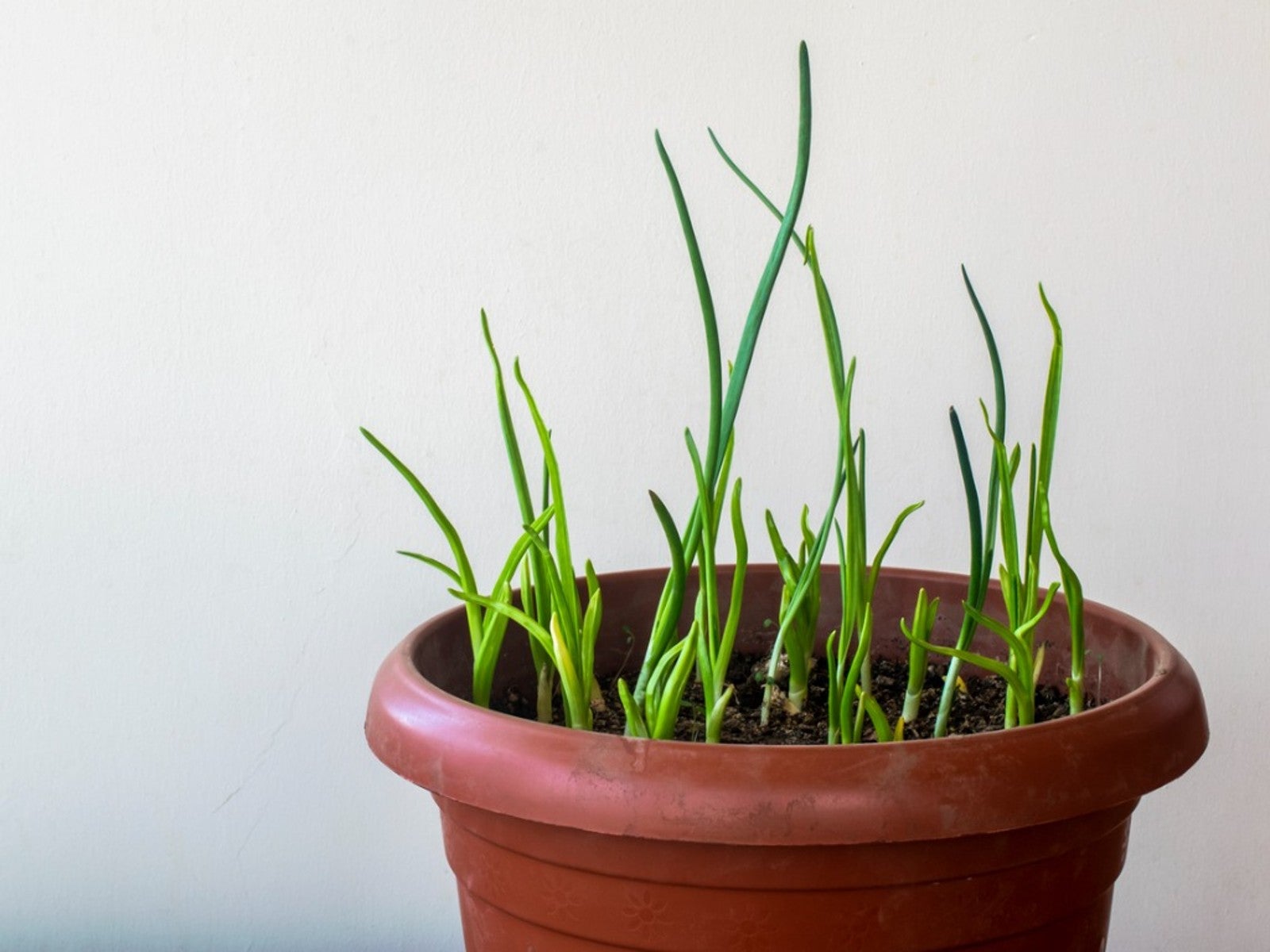Grow Garlic Indoors With These Simple Steps

Garlic is used in practically every cuisine on the planet and as such is often a crop of choice for the gardener. But what about growing garlic indoors? Can you grow garlic indoors? While it may seem counter intuitive, garlic as well as many other crops can easily be grown inside, provided of course that you have an adequate light and heat source. Read on to learn how to plant garlic indoors.
Is it Possible to Grow Garlic Indoors?
You may have seen or even planted flower bulbs in containers. This is a common approach to planting bulbs other than in the ground, and bulbs flourish in containers.
Garlic is the edible bulb from a plant in the Lily family. Therefore it stands to reason that garlic bulbs would thrive in containers, and they do, provided you follow a few simple rules.
About Growing Garlic Indoors
Garlic (Allium sativum) is rarely grown inside, but when it is it’s more likely to be grown for the delicious greens or scapes rather than the bulb. This is because garlic bulbs are slow growing; taking up to 6 months or more to come to fruition. Also, garlic cloves require a chilling period of several weeks prior to planting in order for the cloves to develop into bulbs. But it is not impossible to grow garlic indoors.
Garlic does not do well under artificial lighting so you will need a good source of alternative light.
And it’s important to note that garlic (all members of the Allium family actually) is toxic to cats and dogs, so those with pets might want to think twice. The toxicity is more acute in the bulbs but even the leaves have some toxicity.
Notes on Growing Garlic Indoors
There are a number of reasons for growing garlic indoors. Perhaps you have no room outside for the plants, or you simply want to experiment. Regardless, garlic can thrive in containers given the correct amount of light and planting depth.
Gardening tips, videos, info and more delivered right to your inbox!
Sign up for the Gardening Know How newsletter today and receive a free copy of our e-book "How to Grow Delicious Tomatoes".
Before you consider growing garlic indoors, be sure you have a sunny location that gets at least 6 hours of sunlight; a south or west exposure window is best. Temperatures should be between 60-80 F (16-27 C).
If you are growing garlic for just the shoots, cloves can be spaced fairly close together. If you are aiming to grow garlic bulbs you will need to chill the bulbs first. Chill bulbs in a refrigerator or similar environment for several weeks prior to planting. This is especially crucial for hardneck garlic, and less so for softneck varieties which are often preferred over hardneck for indoor growing.
How to Grow Garlic Indoors
At the end of the chilling period, bulbs can be divided into cloves to plant. If you only wish to grow the bulb for greens, skip the chilling period. Cloves are planted at the end of the outdoor gardening season for your region.
Choose containers that are at least 8 inches (20 cm.) across and deep with a drainage hole. Fill the container with a potting soil that includes compost. Plant each clove an inch (2.5 cm) deep, spaced 4-6 inches (10-15 cm.) apart. Keep the cloves far enough away from the edge of the container to allow for growth.
Care of Indoor Garlic
Keep the cloves moist, not wet. The rule of thumb is to provide an inch (2.5cm.) of water per week, but the best idea is to use your fingers. When the potting mix feels dry to touch, give the garlic a drink.
If you are growing garlic for bulbs, feed the plant two times per month with a water soluble fertilizer diluted at half strength. Garlic grown for greens does not need supplemental feeding.
Garlic grown for greens can be harvested when the shoots are only a couple of inches (5 cm.) tall. Leave an inch (2.5 cm.) of shoot on the plant so it can continue to grow.
Garlic grown for mature bulbs will take some patience. After about 6 months, when the shoots begin to brown, stop watering. After a couple of weeks the shoots will have dried completely and the bulbs can be harvested. Store the harvested bulbs in a cool, dry location.

Amy Grant has been gardening for 30 years and writing for 15. A professional chef and caterer, Amy's area of expertise is culinary gardening.
-
 Moody Blooms For Spring: 8 Types Of Black Flowers To Add Drama To Spring Displays
Moody Blooms For Spring: 8 Types Of Black Flowers To Add Drama To Spring DisplaysFrom midnight burgundies to inky violets, several types of black flowers can enrich and embolden a spring display. Try these brooding bloomers for a moody garden
By Tonya Barnett
-
 My Homemade Orchid Fertilizer Always Brings More Blooms – Here's The Easy Recipe That Transforms Plants
My Homemade Orchid Fertilizer Always Brings More Blooms – Here's The Easy Recipe That Transforms PlantsScientist-turned-gardener Mary Ellen Ellis shares her tried-and-tested DIY orchid fertilizer recipe, plus more ingredients to try for healthy, happy plants.
By Mary Ellen Ellis